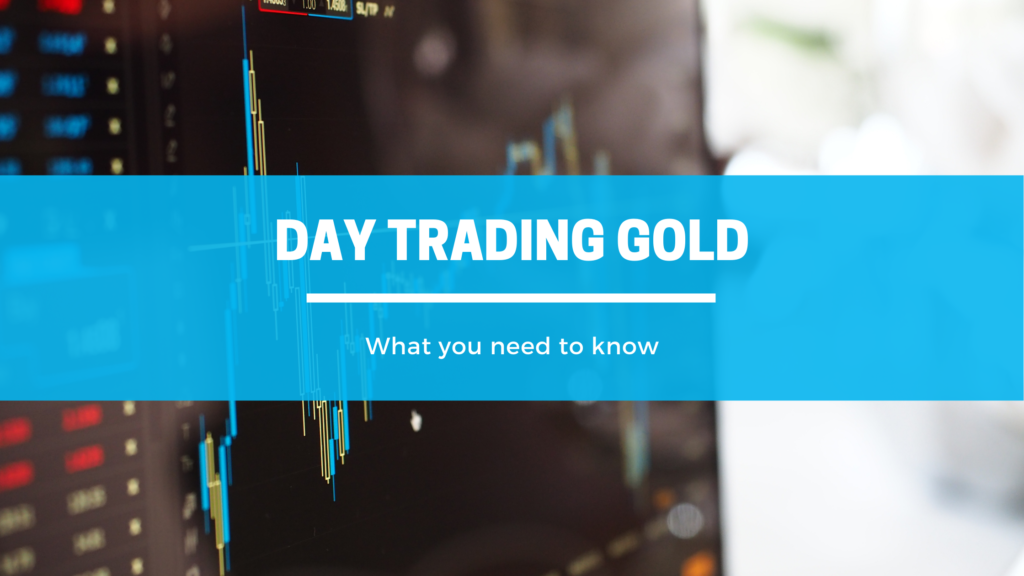Gold, being one of the world's oldest currencies, has become profoundly ingrained in the financial world's consciousness. As of December 2019, this statistic lists the top major financial assets in the world by average daily trading volume. At $145.5bn, gold had the third biggest average daily trading volume.
You may be wondering why some traders put their money into gold. The answer has something to do with gold hedging. Depending on the economy's current stability, gold and other valuable metals may well have a negative correlation with bonds and assets. This adds to the perception of precious metals as a safe refuge for investors. When the value of their stock portfolios falls, some day traders opt to trade gold to offset their losses.
In the market of gold, this is known as hedging, which is a common trading strategy. Many traders wish to diversify their portfolios by spreading their investments across a variety of markets, where there is potential for the price of gold to rise as a result of certain circumstances that would normally lead bond and stock prices to fall.
By the end of this guide, you should have a good understanding, so keep reading if you’re interested in exploring this potentially lucrative market.
What is It?
Speculating on short-term price changes is what day-trading gold is all about, and it's all done virtually. Futures contracts allow you to trade gold without actually owning it. Because gold is a reasonably stable asset, it’s likely to return to its former high or low prices in the future. This is not a suitable day trading strategy because these targets can take you a long time to reach. Range-bound methods don't often give immediate profit possibilities like momentum strategies do.
What Makes Gold Move?
Gold manages to draw many people with many interests. Gold bugs collect physical bullion and invest a significant amount of their assets in gold stocks, futures, and options. Retail investors make up the bigger percentage of gold bugs, and just a small portion of their funds is dedicated solely to gold.
Because gold bugs offer a constant flow of buying demand when prices are lower, they add a substantial amount of liquidity while limiting how low gold stocks and futures go. On the other hand, they serve the opposite purpose of making short sellers start trading, particularly in markets driven by emotions.
Furthermore, gold attracts significant hedging activity from institutional investors.
This metal asset responds to a small number of price triggers. And as a gold day trader, you have to know each of these forces that affect the trend and volume intensity of gold. These factors are supply and demand, inflation and deflation, and greed and fear.
When you trade gold to respond to one of these extreme cases, you expose yourself to greater risk than if you trade gold in response to another. Imagine, hypothetically, if global financial markets have a selloff, while gold experiences a significant rally. Many traders assume that fear is driving gold’s price up and enter the market, hoping that the crowd that’s driven by emotions will take the price higher. Inflation, alternatively, may have caused the stock to decline, which attracts a bigger crowd consisting of people that want to sell, contrary to the trend of buying gold.
In international markets, these factors are always present, forming long-term trends that track both long downtrends and long uptrends.
Generally, gold’s prices can change as a result of political, economic, and social unrest. Gold trading is often regarded as a safe haven since its price isn’t necessarily influenced by government policies or inflated by interest rates like some stock market shares. Gold, therefore, can serve as a type of insurance, as people who invest in it are able to liquidate their gold assets during times of uncertainty.
This might boost gold's value by increasing demand as investors try to use gold as a stock hedge.
Futures
Speculating on any asset’s short-term price changes is known as day trading, and that includes gold. With day trading, gold isn't handled physically and there’s no possession. Instead, transactions are conducted electronically, with only gains and losses shown in the trading account.
You can trade gold in many ways. The most common way is through futures contracts, which is an agreement to sell or buy something (like gold) in the future. And of course, buying gold futures contracts doesn’t imply that you have to take the gold’s physical ownership.
Day traders close out all trades daily and benefit from the difference in price between where they bought the contract (trade) and where they sold it. COMEX is the exchange where gold futures are traded. The standard gold future (GC) is 100 troy ounces of gold, whereas a micro gold future (MGC) is 10 troy ounces of gold.
Gold only moves in $0.10 increments on the futures exchange. The smallest fluctuation a futures contract can make is referred to as a ‘tick.’ The number of ticks the price moves away from your entry price when you purchase or sell a futures contract determines your loss or profit.
To figure out how much money you made or lost, you'll need to know the tick value of the contract you're trading. Your trading platform should also show you, but we’re just giving you an idea about how everything works.
The tick value for a standard contract worth $10 (since the contract represents 100 oz of gold, multiplying 100 oz by the $0.10 tick size equals $10). Simply put, a one-tick change in each contract will result in a gain or loss of $10. You gain or lose $100 if it moves 10 ticks. If it moves 10 ticks and you have 5 contracts, you will make $500 profit or loss.
The tick value of a micro contract is $1 (since the contract represents 10 ounces of gold multiplied by $0.10). The cost of ten ticks is $1, meaning that a one-tick change in each contract will result in a gain or loss of $1. You gain or lose $10 if it moves 10 ticks. If it moves 10 ticks and you have 5 contracts, you will make $50 profit or loss.
Gold Futures
Your futures broker will determine how much money you need in your account to start day trading a gold futures contract. The intra-day margin is the amount demanded by the broker to open a day trading position. It varies depending on the broker and might change at any time.
These figures are based on day trading and closing out positions each day before the market closes. If you hold a position overnight, you must meet Initial and Maintenance Margin requirements, which means you'll need extra money in your account.
ETFs and Unit Trusts
Both the iShares Gold Trust and the SPDR Gold Trust are unit trusts, not exchange-traded funds (ETFs.) Both trusts and ETFs are eligible for day trading. Physical gold is held by these UITs.
An ETF, on the other hand, is a fund that invests in a product that tracks the price of gold, like gold futures. The VanEck Vectors Junior Gold Miners Fund and VanEck Vectors Gold Miners ETF (GDX) are two popular gold-miner ETFs.
The gold investment trusts are the most actively traded and liquid, with an average of more than 8m and 17m shares traded daily. Because the price of iShares Gold Trust is about ten times lower than that of the SPDR Gold Trust, it will have less intraday fluctuation in terms of price. The SPDR Gold Trust's price and volume make it suitable for day trading. Keep in mind though, that lower price allows for bigger numbers of trades.
Day Trading Gold Through ETFs and Stock
Another option for day trading gold is to use a stock exchange-traded fund, such as the SPDR Gold Trust (GLD). The SPDR Gold Trust trades at around a tenth of the price of gold.
You can trade gold’s price movements if you have a stock trading account. Since the trust keeps gold in reserve, its value fluctuates with gold’s price. If gold futures are trading at $1,000, the Gold Trust will be trading at around $100.
The trust is traded in the same way as any other stock. Because the minimum price movement is $0.01, each time the price changes by a penny, you win or lose $0.01 for each share you hold. Stocks and ETFs are usually traded in 100-share blocks (known as ‘round lots’), which means that if the price moves a penny and you hold 100 shares, you gain or lose $1.
The amount of money you'll need in your account to day trade a gold ETF is determined by the ETF's price, the size of your position, and your leverage. In order to day trade stocks or ETFs in the US, for example, you must have a minimum balance of $25,000 in your account. Depending on how much money you want to make and how much leverage you have, you may want to have more than $25,000 on hand.
Best Times for Trading Through Trusts and ETFs
Day traders that want to get the most out of XAU/USD focus on the busiest trading hours, which are justified by significant trading volume. Around 10:00 am – 6:00 pm (EST) is when gold is traded the most. Traders should not overlook events that have the potential to cause noticeable price swings in gold.
The gold market's trading hours vary depending on whether you're trading futures, spot, or options pricing. IG, for example, offers spread betting and CFD trading on gold options on a daily basis from 3:30 a.m. Monday to 5:15 p.m. Friday (EST).
As a day trader, volatility is your best friend. The combination of price movement and liquidity gives bigger potential for both gains and losses in a short period of time.
When the daily price of gold fluctuates by at least 2%, focus on gold ETFs and trusts. On a gold daily chart, use an ATR indicator, divide the ATR value by the price of the ETF or trust, and then multiply it by 100. If you find the number is not greater than 2, the market isn't in a good condition for you to day trade gold ETFs or trusts.
Typically, The Gold Miner and Junior Gold Miner ETFs have more volatility than gold trusts. Due to their higher volatility, gold miners offer more possibilities for day trading when the price of gold is stable.
Gold Miner ETFs and Gold Trusts
Pay attention to the SPDR Gold Trust when it moves more than 2% per day. Trade one of the gold-miner ETFs if the trust moves less than 2%.
People make trades only in the direction of the trend. The price should pause for at least 2 or 3 price bars at some point throughout the pullback (a pause is a brief period of consolidation in which the price stops falling and begins to move more laterally.)
It’s best to buy when the price surpasses the high of the pause after it occurs since the price is expected to continue to move higher. The pause's low should be higher than the previous swing's low. If it’s not, it's a sign that the uptrend is in danger, and no trades are taken. Place a stop loss immediately below the pullback low after the entry.
It’s the same tactic when it comes to downtrend. The price should have made a low dip recently, and you want to enter on a pullback (the pullback should be to the upside in this case). The price should pause for 2 or 3 price bars at some point throughout the pullback. You should short-sell when the price breaks below the pause's low after the pause occurs, since the price is expected to continue to move lower. The pause's low should be lower than the previous swing's high. If it’s not, it's a sign that the uptrend is in danger, and no trades are taken. Place a stop loss just below the pullback low after the entry.
The Bottom Line
When it comes to trading gold, there’s no unified or calculated profit. Your trading strategy and entire business plan are what will influence the outcome of your day trade. While gold day trading has the potential to make you a fortune, it’s not a loss-free type of trading. So, before you create an account to start, make sure you're aware of the potential risks and limitations, and make sure that you've done your research to make the most out of this unique trading experience.




